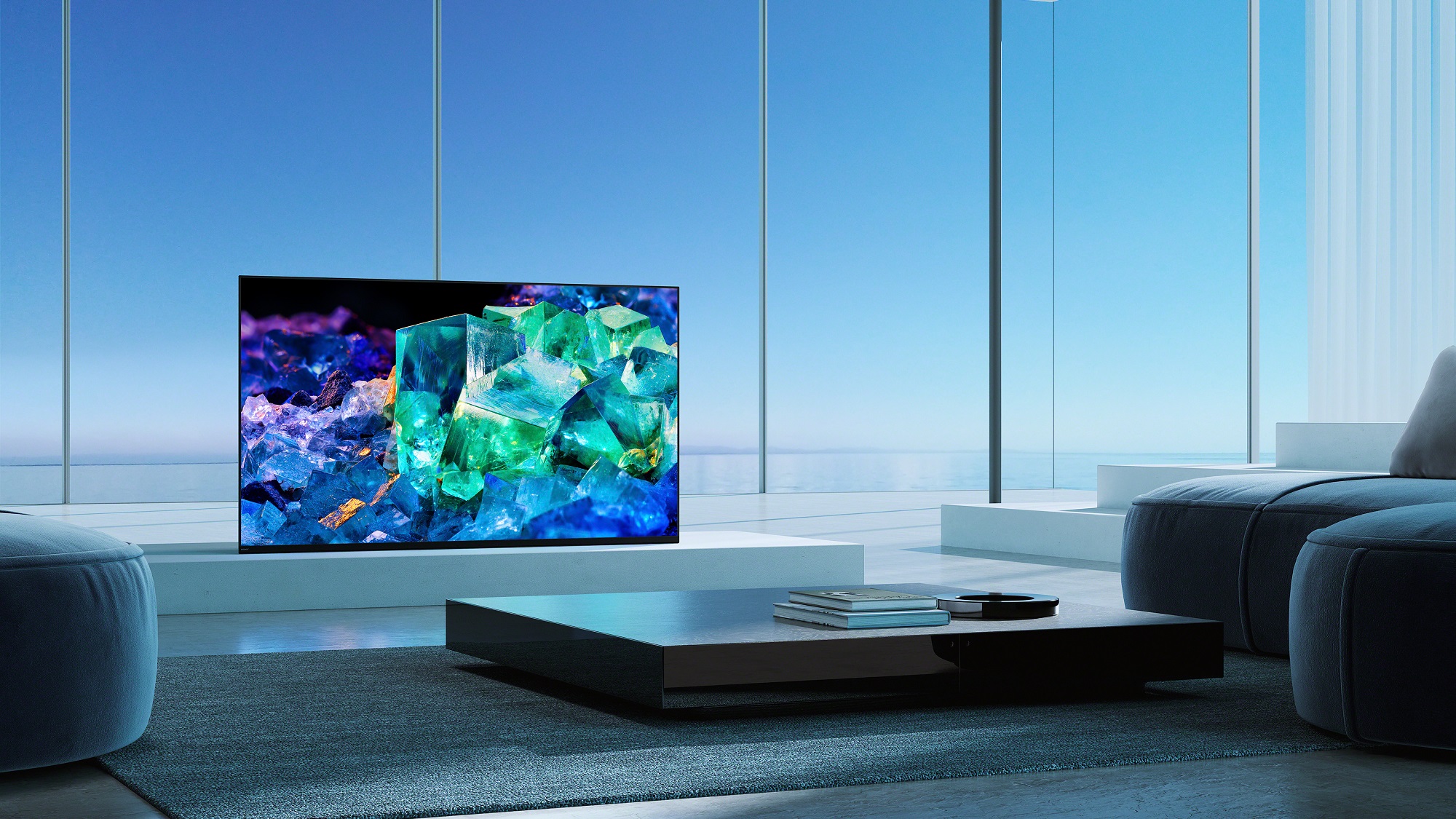
The future of TVs is bright, and I'm not talking solely in nits. Technologically speaking, we haven't seen major advancements in terms of what kinds of panels we use on a daily basis, though LG's four stack OLED and Sony's new RGB Mini-LED technologies are both enticing.
But these advancements are built on the back of long-existing technologies, and what could be on the horizon might even blow both of these display types out of the water. At the forefront and one that might be closer to reality than we think are QDEL TVs, or Nano-LED TVs, which have long been touted as true OLED killers.
It's not alone. Two other advanced display technologies could be on the near horizon and one of them might even land ahead of the aforementioned QDEL TVs. These include Blue PHOLEDs and inkjet printed displays, the former of which was first announced all the way back in 2005.
Let's take a quick hop-skip into the future to see not only which of these advanced display technologies might be most apt to replace the best OLED TVs but also which among them might be closest to coming to fruition.
1. QDEL (Quantum Dot Electroluminescent TVs)
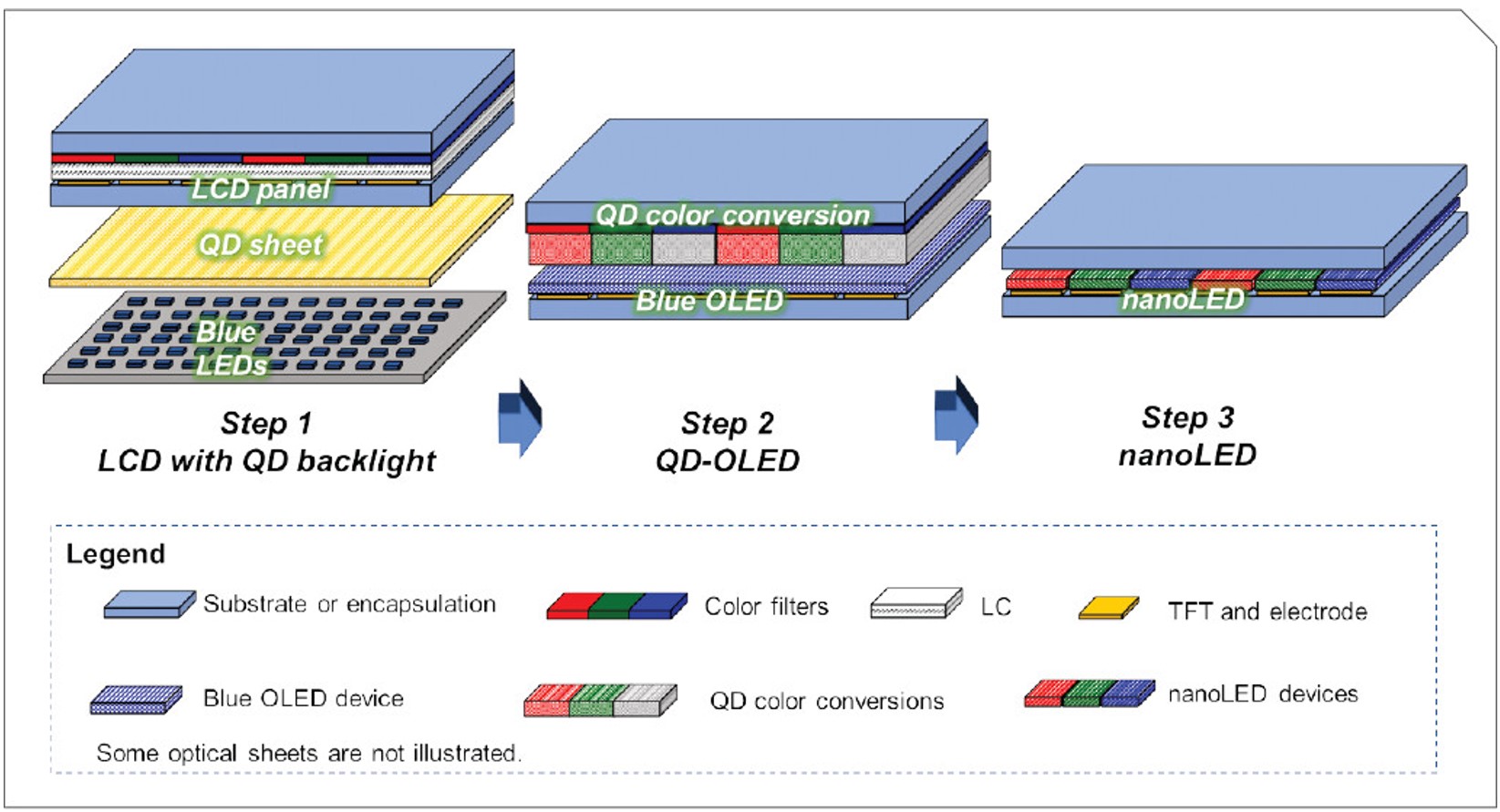
There's a lot of discussion of late on the nature of QDEL technology, otherwise known as Nano-LED displays (or even QD-EL, as others call it). That's largely due to the fact that several TV manufacturers are working on strategies to advance this type of display into production within the next several years.
What makes NanoLED TVs so special is their use of quantum dots (QD) without a backlighting panel, which deviates from the conventional QD TVs we know today, like the Sony A95L OLED TV. Instead of a backlight, NanoLEDs leverage a direct application of electricity to the quantum dots, hence the "self-emissive" and "electroluminescence" monikers.
This proves highly complicated, especially for the advances available with the technology, like improved power efficiency, longer lifespans, and some of the most robust color accuracy we've ever seen on a TV. It's a bit too early to tell if these would then equate to some of the best TVs right out of the gate, especially given how it looks like the beginning of the end for QD-OLED TVs.
Sign up to get the BEST of Tom's Guide direct to your inbox.
Get instant access to breaking news, the hottest reviews, great deals and helpful tips.
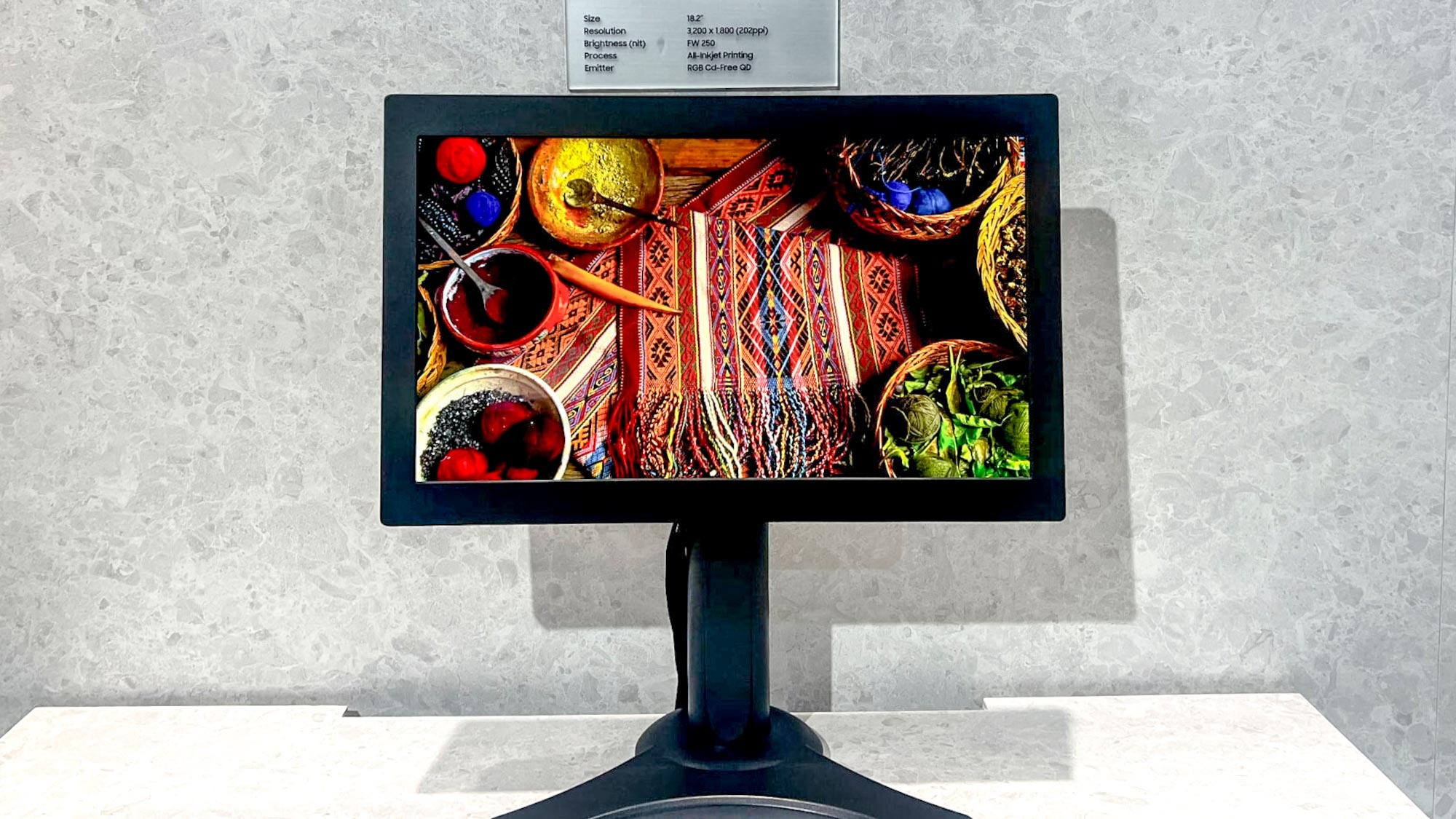
But the technology could make its way into our living rooms sooner than you might realize. A recent exposé out Business Korea claims that Samsung is developing the technology and aims to beat TCL to the punch. Their sources also suggest that "Chinese firms are currently ahead of LG Display," though which remains unclear.
Samsung is putting a lot of R&D into the project. According to Business Korea, it's leveraging three different sectors within its pipeline, including Samsung Electornics' Visual Display (VD), Samsung Advanced Institute of Technology (SAIT), and Samsung Display. Despite the manpower, it's still supposedly "a few years" away, and it doesn't seem TCL is too far behind.
Thus, it's hard to tell when consumers could actually expect it in their living rooms. As of writing, there's only been three physical iterations of the technology, the first of which came to fruition out of Sharp with help from NanoSys, the company that not only developed the the technology but coined the NanoLED nomenclature.
As expected, the only other examples we have of QDEL displays in the wild are out of Samsung Display and TCL CSOT, their manufacturing arms. The two showed off these advances at Display Week 2024, where they claimed NanoLED could be the next big thing in TVs with an 18.2-inch 3200x1800 resolution display and a 14-inch 2.8K resolution display, respectively.
2. PHOLED TVs (Phosphorescent Organic Light-emitting Diodes)
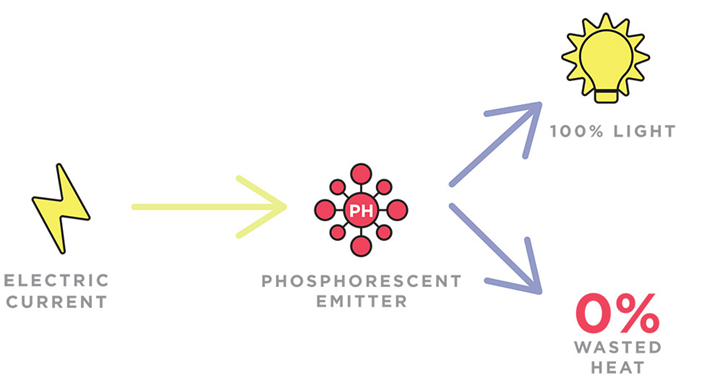
While we might be getting ever-closer to seeing NanoLED TVs, we've long heard of the future potential inherent in PHOLED displays, more commonly referred to as Blue PHOLEDs. As already mentioned, the technology was first conceived back in 2005, but it's only started seeing real-world examples in the past two years.
Blue PHOLEDs can get quite confusing and convoluted, requiring some knowledge of chemistry and color, but I'll make it easy by contrasting them with the OLEDs we know today. OLED TVs have red, green, and blue (RGB) subpixels — LG even adds a white subpixel for good measure (hence its WOLED panels).
The major difference between OLEDs and PHOLEDs is that the latter uses phosphorescent blue subpixels, whereas many common OLED TVs have their fluorescent blue counterparts, like the Samsung S95D OLED or LG C4 OLED. This is largely due to the fact that blue is the least efficient of the color spectrum, producing more heat that leads to potential burn-in.
Fluorescent subpixels are about 25% as efficient as their phosphorescent counterparts, proving just how invaluable Blue PHOLEDs could be in the market if they were ever to will out in the R&D stage. Unfortunately, much of the conversation around PHOLEDs has fallen by the wayside, largely in favor of NanoLED technology.
But it is still on the way. Universal Display Corporation (UDC), the company that's championing this technology, claimed it would launch in 2024. More recent updates on when Blue PHOLEDs might be coming suggest by 2026, with a more intimate announcement within the second half of 2025.
Even with these updates, it's hard to see Blue PHOLEDs becoming popular right out of the gate. It will take some time before the displays become more widely popular and even then, depending on cost of production, it still could take a while before consumers are willing to shell out extra on a new TV that may or may not have major picture performance benefits and enhanced energy efficiency.
3. Inkjet Printed Displays
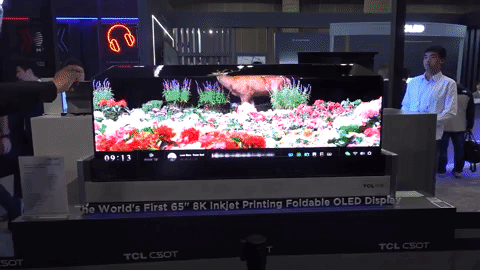
In the US, TCL isn't quite known for its OLED displays. In fact, you might be more familiar with the brand when talking about some of the best budget TVs, largely because over here it focuses on Mini-LED TVs (which it's started calling QD-Mini-LEDs in an effort to hone in on the US OLED market).
In China and other Asian countries, TCL has a smattering of OLED products built out of its CSOT division, where the company has been testing a new manufacturing concept of using inkjet printing to make OLED TVs. They've come to be referred to as IJP OLEDs, which were originally scheduled to hit the market by 2024 or 2025.
Despite the wonky timeline, we have already seen some of these displays, most of which largely being relegated to the 8K resolution. TCL at first focused on mobile screens in 2016 before expanding its manufacturing process into larger displays by 2020.
As of writing, according to FlatpanelsHD, TCL's T8 line in Guangzhou, China can produce 55-inch, 65-inch, and 75-inch OLED panels using the ink-jet printing process over deposition panel production. TCL claims this deviation leads to lower-cost production in tandem with enhanced efficiency — though the former seems to not have come to fruition as quickly as TCL hoped.
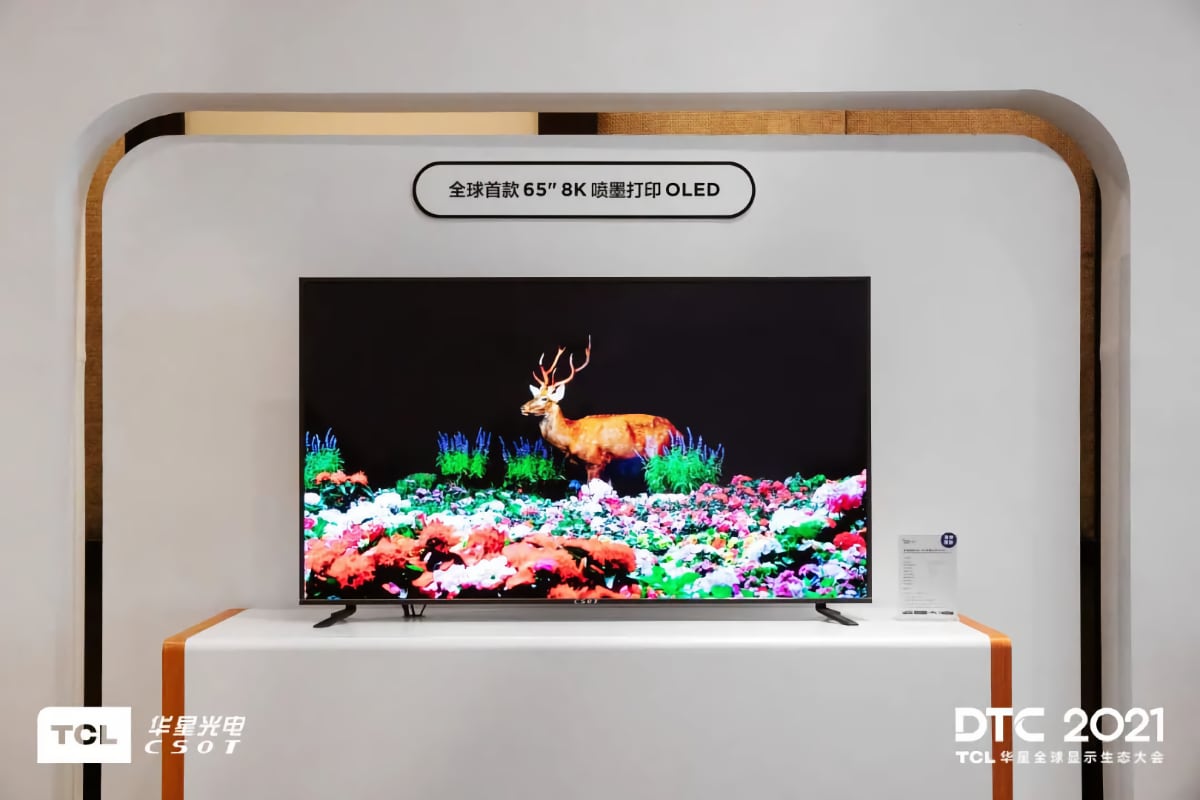
While it's still very early to tell just how much these IJP OLEDs could cost in the consumer market, their potential specs are something to truly ogle over. TCL claims they could deliver as much as 2,000 nits of peak brightness and cover as much as 90% of the Rec.2020 gamut.
For perspective, last year's LG G4 OLED TV, which we gave a near-perfect score, hit 72.91% of the Rec.2020 gamut (and few other OLED TVs prove much better). In terms of luminance, the G4 pushed out an impressive 1,476 nits of peak brightness in a 10% window.
So, there's a clear reason to get excited, but to the dismay of many it won't be arriving in the US (or elsewhere) any time soon. And even if it did, the price for such a set would most likely be astronomical. But TCL's IJP OLEDs do exist in the wild, specifically in medical monitors.
It's probably the one area that actually has the capital for such a display. As for general consumers? You'll probably be waiting another five years at least before you see any IJP OLEDs (or TCL OLEDs, for that matter) within your household. Though, one thing they do offer us is a potential glimpse into a world with far cheaper OLED TVs, and that's a timeline we'd all love to live in.
Outlook
While these are the three main ways we could see TVs evolve in the near future, they aren't the only ones. A more recent breakthrough could see the elimination of polarizing layers in OLED sets, which would equate to far more energy efficient and brighter TVs.
However, the likelihood of such sets coming to fruition any time soon is slim to none. The major issue is that such innovations not only take time to find a route to mass production but also cost a hefty penny to build off of. Just look at how long Blue PHOLEDs have been in development.
At one point in time, the once-beloved MicroLED TVs were considered to be the next major win over OLEDs, but that ship has duly sailed even in the face of Hisense's new 136-inch MicroLED screen. Both Samsung and LG announced they're rethinking their MicroLED TV strategies back in 2024, which doesn't bode too well for the panel type.
All things considered, I think out of the three mentioned above the one display innovation with the most merit is probably QDEL or NanoLED TVs. Blue PHOLEDs seem like a pipe dream at this point and IJP OLEDs might be consigned to live for 8K displays (or relegated primarily to the Asian medical market).
But NanoLEDs prove the most realistic in the end, largely due to their potential costs and benefits. We'll just have to wait and see which makes its way into our living rooms the fastest.
More from Tom's Guide

Ryan Epps is a Staff Writer under the TV/AV section at Tom's Guide focusing on TVs and projectors. When not researching PHOLEDs and writing about the next major innovation in the projector space, he's consuming random anime from the 90's, playing Dark Souls 3 again, or reading yet another Haruki Murakami novel.
You must confirm your public display name before commenting
Please logout and then login again, you will then be prompted to enter your display name.

